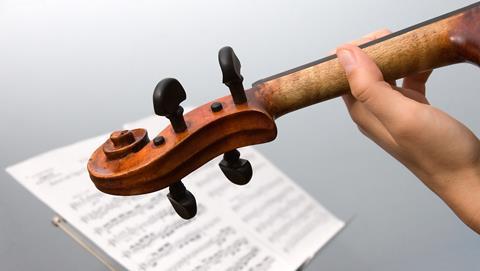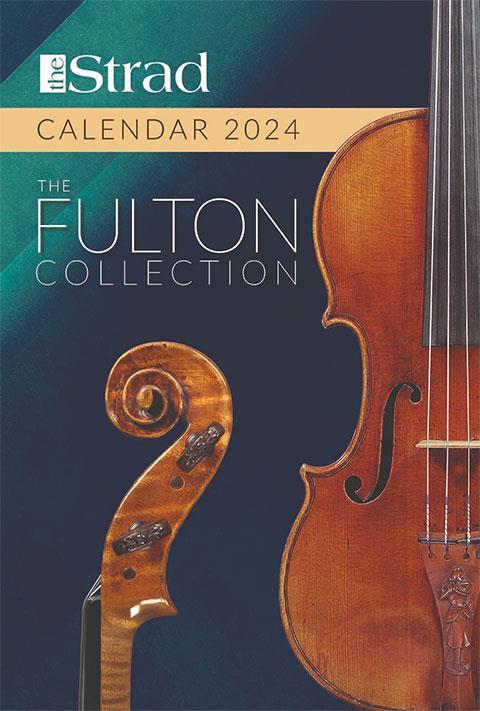To free up left-hand technique, violinist and teacher Martin Goldman encourages players to think more carefully about their thumb as an independent entity, yet still in close partnership with the four fingers

Discover more Featured Stories like this in The Strad Playing Hub
Read more premium content for subscribers here
A ten-year-old student surprised me recently by saying: ‘Didn’t you know the thumb is not a finger?’ I smiled, but a quick search on the internet revealed that it is anatomically and functionally different from the other four digits.
I realised that a young pupil’s statement supports my opinion that for fundamental set-up, or more subtly in terms of balance, we violinists should pay more attention to our left thumb. I’m sure we’ve all known how, when experiencing the slightest inkling of worry or questioning, our ‘reptilian brain’ makes the thumb squeeze.
I’ve learnt that technique is often a matter of opinion. Simply saying ‘think about the thumb’ is a pretty vague statement, so here are my thoughts. I begin with the natural posture, palm facing up. Kató Havas called it the ‘giving hand’ position. That informs us that the thumb should be behind the tip of the first finger. Heifetz pointed that out too.
Visualising the thumb as having its own independent existence, I like to touch the neck around the joint line, especially when playing double-stops. Just like when I tell students to check intonation, I tell them to stop and check the thumb. Is it soft, measuring the fingerboard? Does it pivot in high positions, anticipating every move?
In Galamian’s book Principles of Violin Playing and Teaching, some pictures show the thumb behind the first finger, others higher. This taught me that nothing is static. Every balance point helps avoid counter-pressure. When I’m most comfortable playing, I can feel the ‘hollow’ space inside my palm, fingers on one side. It’s because of the thumb.
With the thumb free to move, it’s easier for the fingers to spread, like a Spanish fan opens and closes. Bruno Giuranna used to put a ping-pong ball inside a student’s hand, implying the thumb should be slightly bent.
Think of the thumb as an anchor, helping the fingers move freely
Do you think we hold the fiddle with our thumb? If I play without a shoulder rest, my thumb rushes to give support. I don’t believe we hold the instrument with our thumb, like we don’t hold the bow with our right thumb. We need it to help feel the centre of the palm, increasing our sense of control. An awakened thumb should self-adjust all over the fingerboard.
At a Suzuki workshop one time, I learnt my favourite exercise for greater thumb independence, which has always come in useful. While playing Perpetual Motion, move the thumb forward and back with each note. Students hate it, until I hear: ‘Wow. My thumb has a brain.’ Then, when you practise the pyrotechnics of Dounis and Yost, for example, where is your thumb?
When playing vibrato, I focus on the thumb creating balance: the fulcrum between the swing of the hand and the finger. My goal is to feel how the soft thumb complements the looseness of the vibrato, making it easier to change amplitude and speed.
I remember when I was a kid, shifting made me anxious, even if could internally hear the note I was going to. I imagine the thumb being quietly alive, along with the guiding finger, carrying the hand higher and lower. When you have a sensitive thumb, it frees the hand of tension. I think of it as a weightless anchor, helping the fingers move freely. This awareness helps players who use the thumb in anticipation of a shift; sliding it up or down into the position before moving the hand.
My view is that you must deconstruct the left hand, making the thumb an equal among three: palm, fingers, thumb. Nothing should be arbitrary when you’re in the flow of purposeful and deliberate practice. Greater attention to this fifth digit lets us play with more expression and control the subtlest nuance, from Twinkle to a Bartók concerto.
Read: Technique: achieving balance between the chin and left thumb
Read: Independence and flexibility in the left-hand thumb
Discover more Featured Stories like this in The Strad Playing Hub
Read more premium content for subscribers here
The number one source for playing and teaching books, guides, CDs, calendars and back issues of the magazine.
In The Best of Technique you’ll discover the top playing tips of the world’s leading string players and teachers. It’s packed full of exercises for students, plus examples from the standard repertoire to show you how to integrate the technique into your playing.
The Strad’s Masterclass series brings together the finest string players with some of the greatest string works ever written. Always one of our most popular sections, Masterclass has been an invaluable aid to aspiring soloists, chamber musicians and string teachers since the 1990s.
American collector David L. Fulton amassed one of the 20th century’s finest collections of stringed instruments. This year’s calendar pays tribute to some of these priceless treasures, including Yehudi Menuhin’s celebrated ‘Lord Wilton’ Guarneri, the Carlo Bergonzi once played by Fritz Kreisler, and four instruments by Antonio Stradivari.













































1 Readers' comment